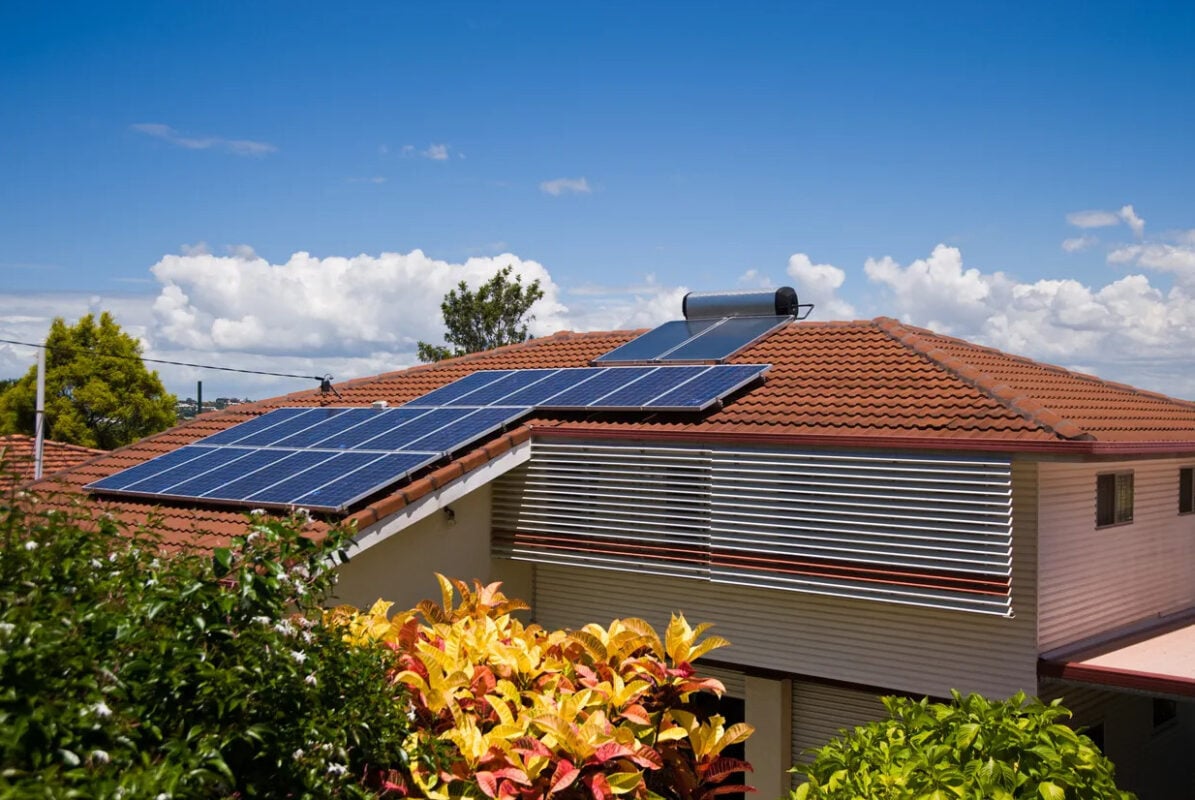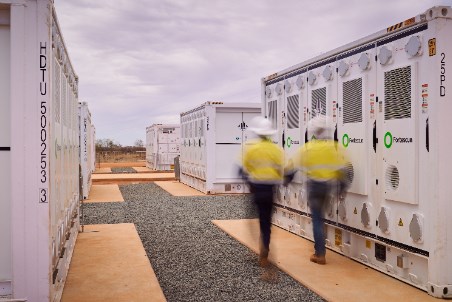New national law will turn large parking lots into solar power farms – Electrek

Report on South Korea’s Mandatory Solar Canopy Initiative and its Alignment with Sustainable Development Goals
1.0 Introduction
The Republic of Korea has enacted a new law mandating the installation of solar canopies on all public and private parking facilities with a capacity of more than 80 vehicles. This report details the policy, its implementation, and its significant contributions to the United Nations Sustainable Development Goals (SDGs). Uniquely, the legislation applies retroactively, requiring existing facilities to comply, thereby accelerating the nation’s transition to renewable energy.
2.0 Policy Overview and Implementation
In August, South Korea’s Ministry of Trade, Industry and Energy announced an amendment to the Enforcement Decree of the Act on the Promotion of the Development, Use, and Diffusion of New and Renewable Energy. The amendment was formally approved in late September and is scheduled to take effect in October, with new installation projects commencing immediately.
- Scope: The mandate covers all publicly and privately-owned parking lots with space for more than 80 vehicles.
- Objective: The primary goals are to proactively expand renewable energy generation, create employment in the green sector, and enhance land-use efficiency.
3.0 Alignment with Sustainable Development Goals (SDGs)
This initiative directly supports several key SDGs, positioning it as a model for integrated sustainable development policy.
- SDG 7 (Affordable and Clean Energy): The core of the policy is to substantially increase the share of renewable energy in the national energy mix by transforming passive infrastructure into distributed power generation assets.
- SDG 11 (Sustainable Cities and Communities): By retrofitting urban spaces, the law enhances the sustainability of cities. It maximizes the efficiency of existing land, reduces the urban heat island effect through shading, and supports the infrastructure for sustainable transport.
- SDG 13 (Climate Action): The mandate is a direct climate action measure, designed to reduce national carbon emissions by displacing fossil fuel-based energy generation with clean solar power.
- SDG 8 (Decent Work and Economic Growth): The legislation is expected to stimulate the economy by creating a significant number of jobs in the solar panel manufacturing, installation, and construction sectors.
- SDG 9 (Industry, Innovation, and Infrastructure): The policy drives innovation by mandating the integration of renewable energy technology into existing and new infrastructure, fostering a more resilient and sustainable industrial base.
4.0 Assessed Socio-Economic and Environmental Benefits
The implementation of this law is projected to yield a wide range of benefits that advance both environmental sustainability and public welfare.
4.1 Environmental and Energy Benefits
- Expansion of eco-friendly renewable energy generation facilities.
- Enhanced stability of the local energy grid through distributed generation.
- Maximized land-use efficiency by utilizing otherwise idle space.
4.2 Public and Economic Benefits
- Provision of tangible comfort to the public, offering shade and protection from inclement weather such as heavy rain, snow, and intense summer sun.
- Protection of vehicles, extending the life of interiors and plastics.
- Improved efficiency for Electric Vehicles (EVs) and Plug-in Hybrid Electric Vehicles (PHEVs) by reducing air conditioning loads and providing opportunities for on-site charging.
5.0 International Precedents and Global Applicability
The viability of large-scale solar carport installations is supported by successful projects in other nations, demonstrating the global potential of this strategy to advance the SDGs.
- United States (Arizona): The Northwest Fire District deployed a 657 kW solar carport system that generates over 1.23 million kWh of clean energy annually, offsetting carbon emissions equivalent to 185,000 vehicles. This case exemplifies a successful contribution to SDG 7 and SDG 13.
- United States (New York): An initiative in New York City has significantly expanded the land area available for solar canopies and EV charging, unlocking 400 million square feet of space and directly supporting SDG 11.
These examples confirm that policies mandating solar installations on parking facilities are a practical and effective tool for municipalities and nations aiming to achieve their climate and sustainable development targets.
Analysis of Sustainable Development Goals in the Article
1. Which SDGs are addressed or connected to the issues highlighted in the article?
The article on South Korea’s mandatory installation of solar panels in parking lots addresses several Sustainable Development Goals (SDGs). The analysis below identifies the most relevant ones based on the initiative’s objectives and outcomes.
- SDG 7: Affordable and Clean Energy: The core of the article is about a national policy to “proactively expand renewable energy.” The mandatory installation of solar panels directly contributes to increasing the generation and use of clean energy.
- SDG 8: Decent Work and Economic Growth: The article explicitly states that the new law is “designed to … create more solar and construction jobs.” This directly links the renewable energy project to job creation and economic activity.
- SDG 9: Industry, Innovation, and Infrastructure: The initiative involves upgrading existing infrastructure (parking lots) with innovative and clean technology (solar canopies). The article highlights this by mentioning the goal to “maximize land use efficiency” by utilizing “idle land such as parking lots.”
- SDG 11: Sustainable Cities and Communities: The project enhances urban infrastructure by making parking lots more sustainable and resilient. It provides “tangible benefits to the public,” such as shade from sun and protection from rain, which improves the quality of urban spaces. It also supports sustainable transport by providing infrastructure for EV charging.
- SDG 13: Climate Action: A primary benefit of the solar carport system is its contribution to climate change mitigation. The article cites a similar project in Arizona that “offsets the equivalent of 185,000 vehicles’ worth of harmful carbon emissions” by delivering “clean, emissions-free power.”
2. What specific targets under those SDGs can be identified based on the article’s content?
Based on the article’s details, several specific SDG targets can be identified as being directly advanced by the described initiatives.
- Target 7.2: By 2030, increase substantially the share of renewable energy in the global energy mix.
- Explanation: The South Korean law mandating solar panel installation on all large public and private parking lots is a direct policy action to increase the country’s share of renewable energy, as stated in the goal to “proactively expand renewable energy.”
- Target 8.2: Achieve higher levels of economic productivity through diversification, technological upgrading and innovation…
- Explanation: The article mentions the law is intended to “create more solar and construction jobs.” This initiative promotes economic growth and productivity in the green technology and construction sectors.
- Target 9.4: By 2030, upgrade infrastructure and retrofit industries to make them sustainable, with increased resource-use efficiency and greater adoption of clean and environmentally sound technologies and processes…
- Explanation: The law requires retrofitting existing parking lots (“existing lots will have to comply as well”) with solar canopies. This is a clear example of upgrading infrastructure with clean technology to improve land and resource efficiency.
- Target 11.6: By 2030, reduce the adverse per capita environmental impact of cities…
- Explanation: By generating clean energy within city limits and offsetting carbon emissions, the solar canopies help reduce the overall environmental footprint of urban areas. The article notes the project in Arizona offsets “harmful carbon emissions.”
- Target 13.2: Integrate climate change measures into national policies, strategies and planning.
- Explanation: The South Korean government’s “amendment to the Enforcement Decree of the Act on the Promotion of the Development, Use, and Diffusion of New and Renewable Energy” is a direct example of a national policy designed to combat climate change by mandating renewable energy installations.
3. Are there any indicators mentioned or implied in the article that can be used to measure progress towards the identified targets?
The article provides several quantitative and qualitative indicators that can be used to measure progress towards the identified targets.
- Indicator for Target 7.2: The amount of renewable energy generated. The article provides a concrete example from an Arizona project that delivers “more than 1.23 million kWh of clean, emissions-free power annually” from a “657 kW solar carport system.” This type of data (kWh generated, kW capacity) can be used to track the increase in renewable energy share.
- Indicator for Target 8.2: The number of jobs created. The article states the law is designed to “create more solar and construction jobs.” An indicator would be the number of new full-time equivalent jobs in these sectors resulting from the implementation of the law.
- Indicator for Target 9.4: The scale of infrastructure retrofitting. The article mentions the law applies to “parking lots in South Korea with more than 80 spaces” and that a New York initiative freed up “an additional 400 million square feet of space” for solar. The number of retrofitted parking lots or the total area covered by solar canopies would serve as a direct indicator.
- Indicator for Target 13.2: Reduction in greenhouse gas emissions. The article quantifies the impact of a similar project as offsetting “the equivalent of 185,000 vehicles’ worth of harmful carbon emissions.” This metric (tonnes of CO2 equivalent avoided) is a standard indicator for climate action progress.
4. Summary Table of SDGs, Targets, and Indicators
| SDGs | Targets | Indicators |
|---|---|---|
| SDG 7: Affordable and Clean Energy | 7.2: Increase substantially the share of renewable energy in the global energy mix. | Installed capacity of solar systems (e.g., “657 kW solar carport system”) and annual clean energy generation (e.g., “1.23 million kWh of clean, emissions-free power annually”). |
| SDG 8: Decent Work and Economic Growth | 8.2: Achieve higher levels of economic productivity through technological upgrading and innovation. | Number of “solar and construction jobs” created as a result of the new law. |
| SDG 9: Industry, Innovation, and Infrastructure | 9.4: Upgrade infrastructure and retrofit industries to make them sustainable… with greater adoption of clean technologies. | Number of parking lots retrofitted (all lots “with more than 80 spaces”); total area of land utilized for solar generation (e.g., “400 million square feet of space” in New York). |
| SDG 11: Sustainable Cities and Communities | 11.6: Reduce the adverse per capita environmental impact of cities. | Provision of shaded areas in urban parking lots; availability of EV charging infrastructure powered by solar canopies. |
| SDG 13: Climate Action | 13.2: Integrate climate change measures into national policies, strategies and planning. | Amount of carbon emissions offset (e.g., “equivalent of 185,000 vehicles’ worth of harmful carbon emissions”); implementation of a national law mandating renewable energy installations. |
Source: electrek.co
What is Your Reaction?
 Like
0
Like
0
 Dislike
0
Dislike
0
 Love
0
Love
0
 Funny
0
Funny
0
 Angry
0
Angry
0
 Sad
0
Sad
0
 Wow
0
Wow
0




















































.jpg.webp?itok=0ZsAnae9#)


























